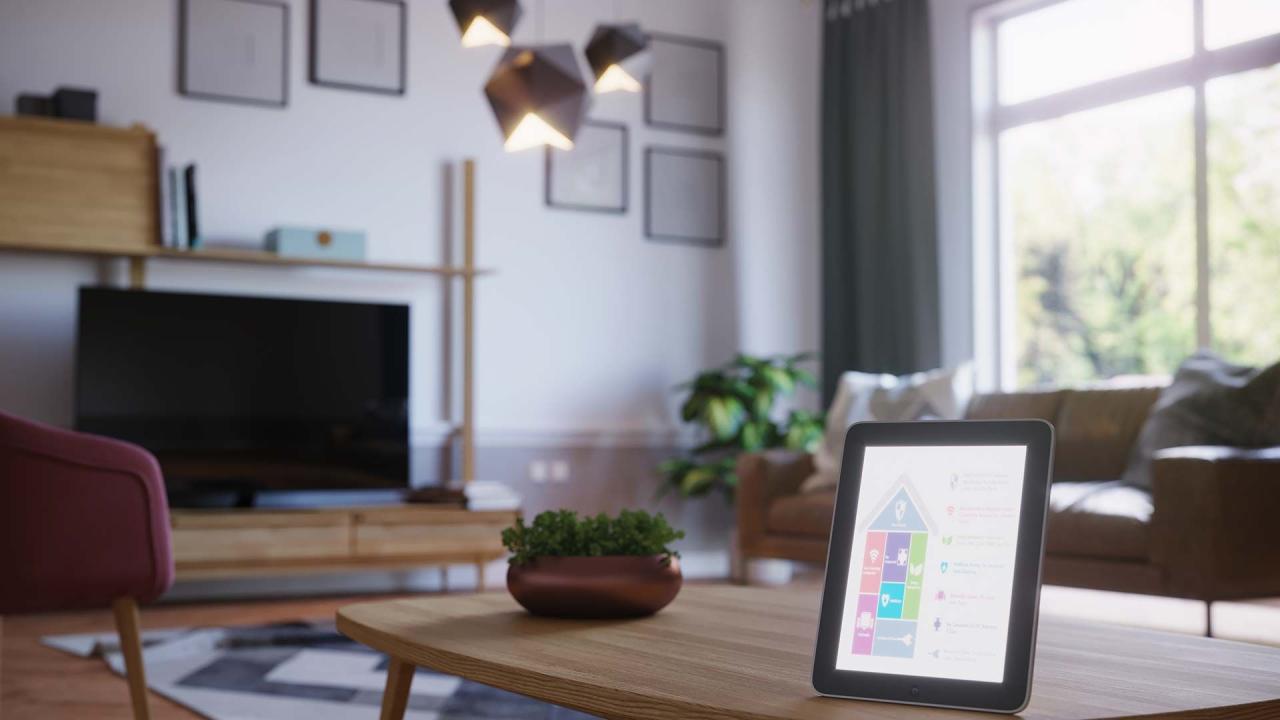Viral Gadgets Turning Homes into Smart Living Spaces highlights the revolutionary impact of technology on our daily lives. As we embrace the digital age, innovative gadgets are transforming traditional residences into interconnected smart environments that enhance convenience and efficiency. From voice-activated assistants to smart thermostats, these devices are not just trends; they are reshaping how we interact with our homes.
With the rise of the Internet of Things (IoT), homeowners have unprecedented control over their living spaces, making it easier to manage everything from lighting to security with just a swipe on their smartphones. This integration of technology is not only practical but also offers a glimpse into the future of home living, where comfort and sustainability go hand in hand.
As we delve deeper into this fascinating topic, you’ll discover how these viral gadgets are setting the stage for smarter, more connected households.
In today’s fast-paced world, the significance of a well-structured article cannot be overstated. Articles serve as a medium to convey information, share stories, and connect with audiences on various topics. This particular article will explore the nuances of crafting an effective piece, encompassing everything from the initial brainstorming phase to the final touches before publication. Understanding Your AudienceBefore putting pen to paper (or fingers to keyboard), it is crucial to understand your audience.
Who are you writing for? What are their interests, concerns, and questions? Tailoring your content to meet the needs of your audience not only enhances engagement but also establishes credibility. Consider creating personas that represent your typical readers. This will help you refine your tone, style, and content choices, ensuring they resonate with the intended audience.
Choosing the Right TopicThe next step in the article-writing process is selecting a topic. It should be relevant and appealing to your audience while also being something you are passionate about. If you’re struggling to find the right idea, consider using tools like Google Trends or social media platforms to see what’s currently engaging readers. Brainstorming sessions can also help—jot down any and every idea that comes to mind, and later filter through them to find the gems worth developing.
Creating an ArtikelOnce you have a topic, the next step is to create an Artikel. An Artikel serves as a roadmap for your article, ensuring that you stay on track and cover all necessary points. Your Artikel should include:
1. Introduction
A hook to grab your readers’ attention and introduce the topic.
2. Main Body
Several sections that delve into different aspects of the topic. Each section should have its own subheading for clarity.
3. Conclusion
A summary of the key points and a call to action or a closing thought.By organizing your thoughts ahead of time, you can streamline the writing process and create a more cohesive piece. Writing the IntroductionThe introduction is your opportunity to make a first impression. A captivating introduction will encourage readers to continue exploring your article. Start with a hook—this could be a provocative question, a surprising fact, or a relatable anecdote.
Follow this with background information on the topic, and clearly state your thesis or the main point of the article. Developing the BodyThe main body of your article is where the bulk of your content will reside. Each section should focus on a specific aspect of the topic, providing valuable insights and supporting information. Use a mix of research, personal experiences, and examples to substantiate your points.

Remember to maintain a logical flow between sections, using transition phrases or sentences to guide the reader seamlessly from one point to the next. This not only enhances readability but also reinforces the connections between your ideas. Incorporating Visuals and MediaWhile text is essential, incorporating visuals can significantly enhance the reader’s experience. Images, infographics, and videos can break up large blocks of text and provide additional context to your points.
Make sure to use high-quality visuals, and remember to credit the sources if they’re not your own creations. Writing the ConclusionThe conclusion is your final chance to leave an impression on your readers. Summarize the key points discussed in the article, and consider restating the importance of the topic. A strong conclusion might also include a call to action, encouraging readers to engage further—be it through comments, shares, or exploring related content.
Editing and ProofreadingOnce you’ve completed your first draft, it’s time to edit and proofread. This stage is crucial to ensuring your article is polished and professional. Look for grammatical errors, awkward phrasing, and any inconsistencies in tone. It’s often helpful to read your article aloud or have someone else review it to catch mistakes you might have overlooked.Consider using editing tools like Grammarly or Hemingway to assist you in this process.
These tools can help identify complex sentences, passive voice, and other areas for improvement. ConsiderationsIn today’s digital age, understanding Search Engine Optimization () is key to getting your articles noticed. Incorporate relevant s naturally throughout your piece, particularly in headings and the introduction. However, avoid stuffing, as this can lead to a poor reading experience and lower your article’s ranking in search results.Additionally, make sure to include meta descriptions, alt text for images, and internal linking to related articles on your site.
These tactics can boost your article’s visibility and drive traffic to your website. Finalizing Your ArticleBefore hitting the publish button, take a moment to review the entire piece one last time. Ensure that it aligns with your initial goals, resonates with your audience, and adheres to any necessary guidelines or standards you may have set. Consider the platform where you will publish your article.
Each platform has its own nuances, so make any necessary adjustments to format, length, or style accordingly. Promotion and DistributionAfter your article is published, the next step is promotion. Share your article across social media platforms, newsletters, and any other channels where your audience is active. Engaging with readers through comments and discussions can also help build a community around your content.Don’t be afraid to repurpose your article into different formats.
You can create a video summary, an infographic, or even a podcast episode discussing the key points. This not only extends the reach of your content but also caters to different audience preferences. ConclusionIn conclusion, writing an effective article involves careful planning, thoughtful execution, and strategic promotion. By understanding your audience, selecting a compelling topic, and structuring your piece thoughtfully, you can create content that informs, engages, and inspires.
Remember that the writing process is an art and a skill that can be honed over time, so keep practicing and refining your approach. Happy writing!
General Inquiries: Viral Gadgets Turning Homes Into Smart Living Spaces
What are viral gadgets?
Viral gadgets are innovative technological devices that gain widespread popularity quickly due to their functionality, design, or unique features, often shared through social media and online platforms.
How do smart gadgets improve home security?
Smart gadgets enhance home security by providing real-time alerts, remote monitoring, and automated systems like smart locks and cameras that can be accessed via smartphones.
Are smart home devices energy-efficient?
Yes, many smart home devices are designed to optimize energy usage, such as smart thermostats that learn your schedule to reduce heating and cooling when not needed, leading to cost savings.
Can I control smart gadgets remotely?
Absolutely! Most smart gadgets can be controlled remotely through dedicated mobile apps, allowing users to manage their devices from anywhere with an internet connection.
What are the potential downsides of smart home technology?
Potential downsides include privacy concerns, reliance on internet connectivity, and the possible costs associated with purchasing and maintaining smart devices.
















